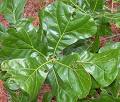Jack Oak Tree Information
Images of Jack Oak:






Jack Oak grows in the following 25 states and provinces:
Alabama, Arkansas, Delaware, Florida, Georgia, Illinois, Indiana, Iowa, Kansas, Kentucky, Louisiana, Maryland, Mississippi, Missouri, New Jersey, New York, North Carolina, Ohio, Oklahoma, Pennsylvania, South Carolina, Tennessee, Texas, Virginia, West VirginiaInformation about Jack Oak:
The Quercus Marilandica is commonly known as the Barren Oak, Black Jack Oak, Black Oak, Blackjack Oak, Jack Oak as well as Scrub Oak.
The currently accepted scientific name of blackjack oak is Quercus marilandica Muenchh. . Blackjack oak has been placed within the subgenus Erythrobalanus, or red (black) oak group . There are no recognized subspecies, varieties, or forms. Blackjack oak hybridizes with the following species : x Q. falcata (southern red oak) x Q. geogiana (Georgia oak): Q. X smallii Trel. x Q. ilicifolia (bear oak): Q. X brittonii W. T. Davis x Q. imbricaria (shingle oak): Q. X tridentata (A. DC.) Engelm. x Q. incana (bluejack oak): Q. X cravenensis Little x Q. nigra (water oak): Q. X sterilis Trel. x Q. phellos (willow oak): Q. X rudkinii Britton x Q. rubra (northern red oak) x Q. shumardii (Shumard oak): Q. X hastingsii Sarg. x Q. velutina (black oak): Q. X bushii Sarg. x Q. laurifolia (laurel oak): Q. X diversiloba Tharp ex A. CamusBlackjack oak occurs in the central and eastern United States from Long Island, New York, New Jersey, and southeastern Pennsylvania; south to northwestern Florida; west to central Texas, western Oklahoma and eastern Kansas; and north to southern Iowa, central Illinois, southern Indiana, and southern Ohio .Blackjack oak occurs as a dominant tree in savannas and in forests adjacent to grasslands. It forms mixed stands with post oak (Quercus stellata) in the prairie transition area of central Oklahoma and Texas, where the eastern deciduous forests grade into the drier western grasslands . Blackjack oak shares dominance with bluejack oak and sand post oak (Q. stellata var. margaretta) on the slightly more mesic midslopes of sandhills, downslope from the xeric ridges that support turkey oak (Q. laevis) . The Pine Plains of New Jersey are characterized by a community of dwarfed blackjack oak, bear oak, and pitch pine (Pinus rigida) . The following published classifications list blackjack oak as a dominant or codominant species: Eastern deciduous forest The natural communities of South Carolina Forest vegetation of the lower Alabama Piedmont Forest vegetation of the Big thicket, southeast Texas The natural forests of Maryland: an explanation of the vegetation map of Maryland Some of the information provided here is attributed to:Carey, Jennifer H. 1992. Quercus marilandica. In: Fire Effects Information System, [Online]. U.S. Department of Agriculture, Forest Service, Rocky Mountain Research Station, Fire Sciences Laboratory (Producer). , available at the USDA Fire Effects Information System (FEIS) website